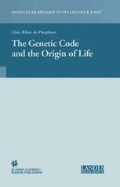Abstract
We have estimated the maximal size for an RNA motif recoverable from selection-amplification for new RNA activities, under conditions that span those in present laboratory use. The number of sequence pieces from which an active site is folded (the modularity) is a crucial variable. Routine laboratory experiments might isolate RNAs of modularity 4 containing ≤33 specified nudeotides. The probability of recovering shorter motifs increases rapidly, but the likely maximal motif size declines 1.66 nudeotides per 10-fold decrease in experimental scale. In such experiments, randomized tracts of 80–120 nucleotides extract most of the benefit of longer initially randomized pools. The same methods also permit extrapolation to conditions more plausible during the initiation of an RNA world. Under these conditions, active RNAs were likely highly modular, even more so than in modern experiments. Strikingly, several lines of evidence converge on the conclusion that 15 to 35-mer active sites would be the working material for an early RNA world. If initiation of an RNA world is synonymous with emergence of active structures from randomized sequences (the Axiom of Origin), populations containing only zeptomoles of RNA (hundreds to hundreds of thousands of molecules) might yield RNAs at the lower end of this size range. This makes the RNA world much more accessible than previously suspected.
Access this chapter
Tax calculation will be finalised at checkout
Purchases are for personal use only
Preview
Unable to display preview. Download preview PDF.
References
Bartel DP, Szostak JW. Isolation of new ribozymes from a large pool of random sequences. Science 1993; 261:1411–1418.
Ciesiolka J, Illangasekare M, Majerfeld I et al. Affinity selection-amplification from randomized ribooligonucleotide pools. Methods Enzymol 1996; 267:315–335.
Ekland EH, Szostak JW, Bartel DP. Structurally complex and highly active RNA ligase derivatives from randomized RNA sequences. Science 1995; 269:374–370.
Ellington A, Szostak JW. In vitro selection of RNAs that bind specific ligands. Nature 1990; 346:818–822.
Ferris JP, Hill AR, Liu R et al. Synthesis of long prebiotic oligomers on mineral surfaces. Nature 1996; 381:59–61.
Fresco JR, Alberts BM, Doty P. Some molecular details of the secondary structure of ribonucleic acids. Nature 1960; 188:98–101.
Hecker KH, Rill RL. Error analysis of chemically synthesized polynucleotides. Biotechniques 1998; 24:256–260.
Hermann T, Patel DJ. Adaptive recognition by nucleic acid aptamers. Science 2000; 287:820–825.
Huang F, Bugg CW, Yarus, M. RNA-catalyzed CoA, NAD and FAD synthesis from phosphopantetheine, NMN and FMN. Biochemistry 2000; 39:15548–15555.
Illangasekare M, Yarus M. A tiny RNA that catalyzes both aminoacyl-RNA and peptidyl-RNA synthesis. RNA 1999; 5:1482–1489.
Illangasekare M, Kovalchuke O, Yarus M. Essential structures of a self-aminoacylating RNA. J Mol Biol 1997; 274:519–529.
Illangasekare M, Sanchez G, Nickles T et al. Aminoacyl-RNA synthesis catalyzed by an RNA. Science 1995; 267:643–647.
Jadhav VR, Yarus, M. Acyl-CoAs from coenzyme-ribozymes. Biochemistry 2002; 41:723–729.
Jenison RD, Gill SC, Pardi A et al. High-resolution molecular discrimination by RNA. Science 1994; 263:1425–1429.
Johnston WK, Unrau PJ, Lawrence MS et al. RNA-catalyzed RNA polymerization: accurate and general RNA-templated primer extension. Science 2001; 292:1319–1325.
Joyce GF, Orgel LE. Prospects for understanding the origin of the RNA world. In: Gesteland RF, Atkins JF, eds. The RNA World. Cold Spring Harbor: Cold Spring Harbor Laboratory Press, 1993:1–25.
Kazakov S, Altman S. A trinucleotide can promote metal ion-dependent specific cleavage of RNA. Proc Nat Acad Sci USA 1992; 89:7939–7943.
Keefe AD, Szostak JW. Functional proteins from a random-sequence library. Nature 2001; 410:715–718.
Kumar RK, Yarus M. RNA-catalyzed amino acid activation. Biochemistry 2001; 40:6998–7004.
Roberson D, Joyce J. Selection in vitro of an RNA enzyme that specifically cleaves single-stranded DNA. Nature 1990; 344:467–468.
Sabeti PC, Unrau PJ, Bartel DP. Accessing rare activities from random RNA sequences: the importance of the length of molecules in the starting pool. Chem Biol 1997; 4:767–774.
Tuerk C, Gold L. Systematic evolution of ligands by exponential enrichment. Science 1990; 249:505–510.
Vant-Hull B, Payano-Baez A, Davis, RH et al. The mathematics of SELEX against complex targets. J Mol Biol 1998; 278:579–597.
Verma S, Vaish NK, Eckstein F. Structure-function studies of the hammerhead ribozyme. Curr Opin Chem Biol 1997; 1:532–536.
Vlassov A, Khvorova A, Yarus M. Binding and disruption of phospholipid bilayers by supramolecular RNA complexes. Proc Nat Acad Sci USA 2001; 98:7706–7711.
White III HB. Coenzymes as fossils of an earlier metabolic state. J Mol Evol 1976; 7:101–104.
Yarus M. RNA-ligand chemistry: A testable source for the genetic code. RNA 2000; 6:475–484.
Yarus M, Illangasekare M. Aminoacyl-tRNA synthetases and self-acylating ribozymes. In: Gesteland RF, Cech TR, Atkins JF, eds. The RNA world. 2nd Edition. Cold Spring Harbor: Cold Spring Harbor Laboratory Press, 1999:183–196.
Yarus M. On translation by RNAs alone. CSHSQB V66, The Ribosome, 2001:207–215.
Author information
Authors and Affiliations
Rights and permissions
Copyright information
© 2004 Eurekah.com and Kluwer Academic / Plenum Publishers
About this chapter
Cite this chapter
Yarns, M., Knight, R.D. (2004). The Scope of Selection. In: The Genetic Code and the Origin of Life. Springer, Boston, MA. https://doi.org/10.1007/0-387-26887-1_5
Download citation
DOI: https://doi.org/10.1007/0-387-26887-1_5
Publisher Name: Springer, Boston, MA
Print ISBN: 978-0-306-47843-7
Online ISBN: 978-0-387-26887-3
eBook Packages: Springer Book Archive

